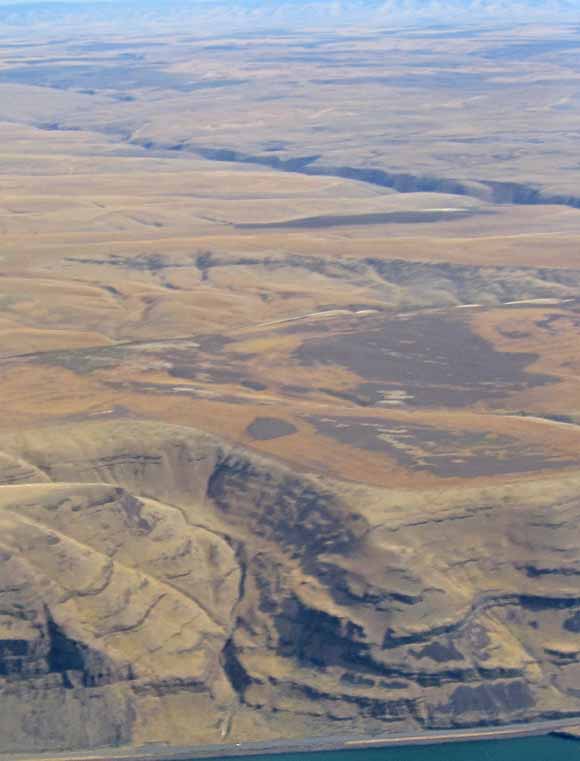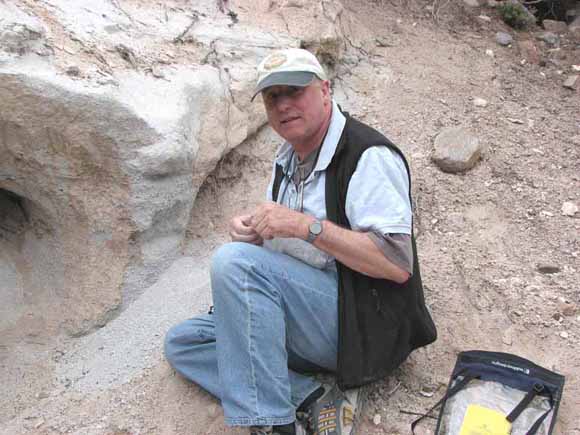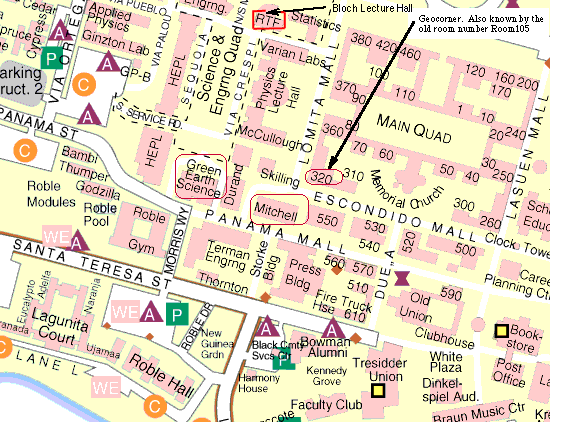
Presents
Location: Stanford University
This will be the 421st meeting since 1954
This talk examines the conditions required to explain the great length (up to 1000 km) and the large volume (up to 10,000 km3?) of continental flood basalt lava flows. Two simple requirements for a long lava flow are 1) sufficient magma held in a chamber to supply a large volume of lava, and b) an emplacement system that can transport the liquid lava from vent to flow front without the lava freezing. For the common lava composition in many provinces, including the Columbia River basalt (CRB) flood basalts, this is a cooling range of only ~ 150 ± 50 °C. During flow a combination of cooling and degassing promotes groundmass crystallization that is crucial in determining the resulting flow characteristics. All long lava flows in the CRB are exclusively p?hoehoe flow fields, or closely related varieties. This is mandated by the fact that ʻaʻā lava flows are too thermally inefficient, losing ~ 2 to 5 °C per km in the feeder channels and rapidly developing groundmass crystals, to attain lengths usually not in excess of 100 km on Earth. Only the insulated flow model for pāhoehoe flow fields, where the dominant lava body is the inflated sheet lobe, fits all the quantitative criteria required to explain the great extent of flood basalt flows: effusion rates are on the order of 1000s m3/sec, lava travels from the vent to the flow front in days to weeks, heat losses are restricted to as little as 0.001 to 0.1 °C per km, and eruption durations are years to centuries. These values dictate that eruptive volumes must be 100s to 1000s of km3, a condition met by only by lava flow eruptions in flood basalt provinces. Outstanding issues with the insulated flow model are, 1) explaining the details of internal lava transport within active lava flow fields (no lava tubes found); 2) exploring textural changes that occur during long-distance lava transport; 3) deciphering what constitutes the products of one CFB eruption in the field; and, 4) investigating the implications of such a model for the plumbing system (magma chambers, feeder and vent systems). Vent systems for CRB flows are poorly understood, and new results on the CRB Roza flow system will help us understand the nature of venting and eruption columns, important for assessment of the environmental impact of flood basalt volcanism.

(CRB photo by Mary Jane Coombs)
Stephen Self has studied volcanic rocks in many parts of the world, concentrating on large (flood) lava effusions, explosive eruptions, and the impact of volcanism on the atmosphere. His current research interests include mechanisms and products of flood basalt and explosive super-eruptions. He has published and lectured widely on the impact of large-scale volcanic eruptions on the environment and society, relevant to both our present world and past Earth history. Steve is currently based in the US where he is Senior Volcanologist with the US-Nuclear Regulatory Commission. Previously, Steve was Chair in Volcanology at The Open University (2001-2008), where he retains an appointment as Visiting Professor, and a past leader of UK’s Volcanic and Magmatic Studies Group (affiliated with the Mineralogical Society). He is a Life Member of International Association of Volcanology and Chemistry of the Earth’s Interior (IAVCEI, an association of IUGG) Fellow of the Geological Society of America, Fellow of the Geological Society (London and a member of the American Geophysical Union. Steve is a past leader of IAVCEI commissions on Volcanism and the Atmosphere and Explosive Volcanism.

Steve Self
Reservations: The preferred way to make reservations is simply to email John Spritzer at jspritzer@usgs.gov by Feb. 4, tell him you will attend, commit to pay, and bring your payment to the meeting. John always emails a confirmation; if you don’t get one, assume email crashed yet again and email him a second time. A check made to “PGS” is preferred, payable at the meeting.
If you want to pay in advance:
Everyone (including Stanford folks now) Please make dinner reservations by Feb. 4. Contact John Spritzer, at U.S. Geological Survey, 345 Middlefield Road, MS-973 Menlo Park, CA 94025, Tel.: (650) 329-4833. Send check made out to “PGS” to John.
Dinner is $35.00. Includes wine (5:30 to 6:15 PM.) and dinner (6:15-7:30 PM.).
For students from all universities and colleges, the dinner, including the social 3/4-hour, is $8.00 and is partially subsidized thanks to the School of Earth Sciences, Stanford University (Note, no-show reservations owe the full price).
Doris, whose wonderful crew prepares our meals, asked that we let you know that people who are late RSVPing and people who show up without a reservation will be welcome but that they will be eating on paper plates with plastic utensils (food supply permitting).
Dues for Academic Year 2010-2011 ($10.00) should be sent to John Spritzer, U.S. Geological Survey, 345 Middlefield Road, MS-973 _Menlo Park, CA 94025. John’s phone: (650) 329-4833.
Officers: Jon Hagstrum, President; David Bedford, Vice President; Mike Diggles, Secretary; John Spritzer, Treasurer; Elizabeth Miller, PGS Stanford University Coordinator

Date created: January 24, 2011
Last modified: February 22, 2011
Created by: Mike Diggles, Webmaster-Secretary, PGS.